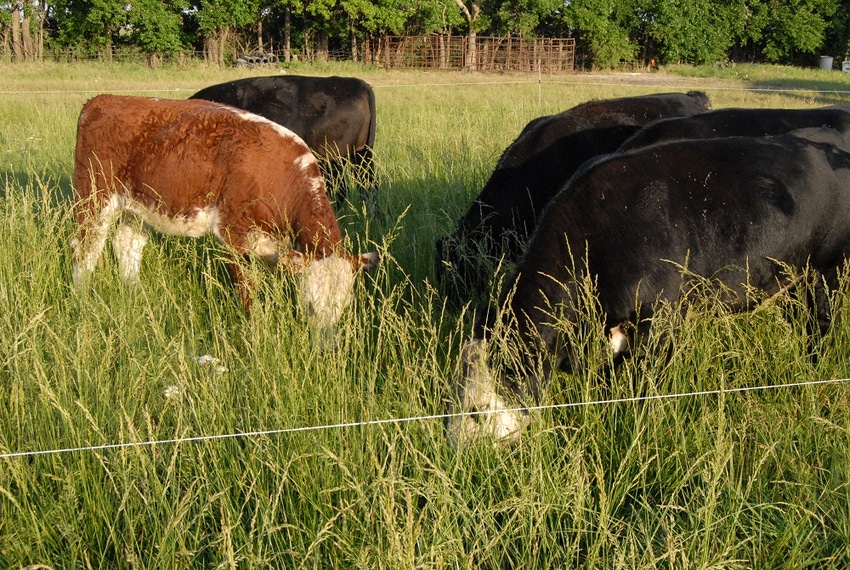
Football season is underway and with the addition of high-tech advances in most every aspect of the game it is frequent for us to hear the quarterback as he changes the play before receiving the snap. His signals are different from the ones we need to receive in the cattle and land management business but they are not any more important.
Then come the animals. How about body condition, hair coat, eyes, temperament, feet and legs, and abdominal fill? Are we paying attention to those signals?
In July, August and September our cattle performance and animal health have been really good. For the past several weeks we have been grazing jungles of five-foot to seven-foot-tall pastures that are tough to walk or drive through. Our permanent one-wire fences are seemly invisible and often weighted down with plant growth. This is not easy grazing but the rewards are high. It is routine for us to see 50,000 pounds of cattle stay full on one-third of an acre or less of new forage daily. Manure is stacked every three to six feet at the end of 12 to 24 hours.
There are lots of signals that I have picked up to look for and pay attention to on an everyday basis. I’ll attempt to review several of them.
Cattle fill. In higher-moisture environments cattle have got to be full most every time we see them if they are going to make significant production gains. This is true during the breeding season and growing season, but is also a primary consideration during winter and early spring.
Manure. I love seeing good-looking manure. It indicates that we are likely doing a bunch of stuff correctly. A good pie is stacked two to three inches high with a palm sized dish in the middle. If each one has 10 to 15 holes it means we have good resident dung beetle numbers. Spread the pie and the consistency needs to be like peanut butter. Within two weeks it should be mostly covered and digested if there is ample moisture. Any frisbies left after 14 to 21 days should be paper thin.
Flies. We have spent less than 20 cents per head on fly control as of mid-September this year. Maybe that is because the cattle are slick and greasy or due to the help we received from the field critters. It is a signal that the natural model systems are coming together with a positive performance.
Birds. We pay special attention to field birds. They are signals that we are doing some things right when they are around in big numbers. We like to see birds throughout the year. The cowbirds and sparrows build nests in multiflora rose bushes, thistle, ragweed, ironweed and new growth brush. They love the edge, and the more edges we manage for the better. These feathered friends, as well as the turkeys, clean the pastures mostly with and behind the cattle. They drastically reduce the number of mosquitoes, gnats and flies. Without nesting sites close to the cattle many of these birds are nonexistent. We look for these signals and it stops us from clipping pastures for all the right reasons.
Tall grass and seeds. Lots of plant diversity adds weeks onto the period of time that our cattle are gaining good weight. In early to mid-September this year our lower, wetter ground had good tonnage of fall panicum and forbs with immature seeds that were high in energy -- which is fattening power -- for our cattle. If we used faster rotations or set-stocking these plants would be nonexistent. Many of the tall, warm-season grasses have a lot of maturity by early fall after 70 days or more of recovery, but they still add to cattle gains and soil building.
Late-summer forbs. These include ironweed, marestail, ragweed, cocklebur, Palmer amaranth, slender aster, boneset, goldenrod, several thistles and I’m sure a bunch more. They are there for a reason. Ragweed is a signal of high phosphorus availability and clay ground that is at least somewhat compacted. With high-density grazing they can add quality calories, protein and mineral to the cattle and the soil. They help restore the water cycle and feed the ground. This results in new soil growth and protection and means more cow days per acre. After grazing in the fall, the stems provide much-needed dry matter in the early spring when the new grass is washy. This is very important.
The signals are out there in our pastures. Some like pink-eyed cattle are telling us of energy and immune systems that are below what is needed. Most of us can do a few positive things to help tweak the natural model. But we need to be careful to not undo what nature is signaling and attempting to provide for us.
A highly diverse plant community should be our goal for good reasons. It can have huge positive effects on cattle health and our bottom line. Soil building and health requires plant diversity and animals. Our job is to study and learn the signals the natural model gives us. The right response can easily add significant dollars-per-acre profits to every grazing operation in North America.
About the Author(s)
You May Also Like






